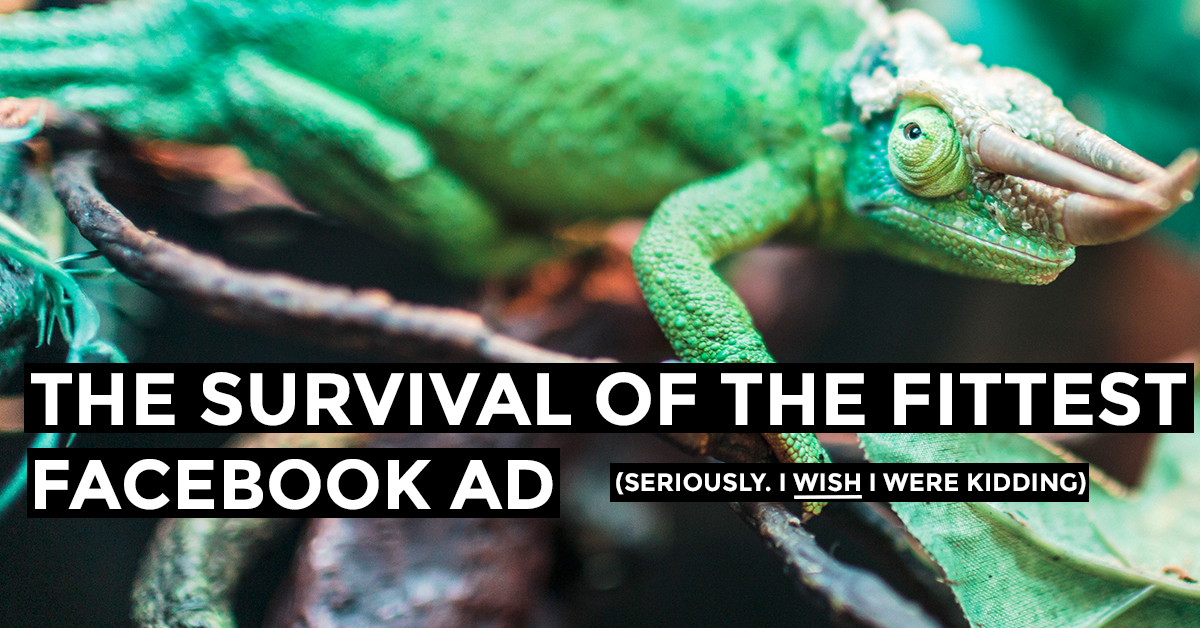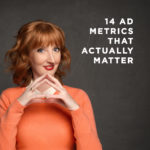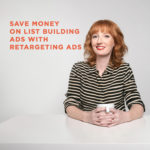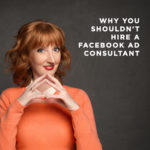You pour hours into creating 3 or 4 Facebook ads. You craft the perfect copy. Design images that look great, include a call-to-action AND pass the 20% text rule. When your ads get approved, you basically pop open a bottle of the bubbly and celebrate at your desk.
Your ads start running (which means you start paying Facebook whether you like it or not). You find it impossible to stop checking your stats every 6 minutes; even I ignore my own advice to wait at least 24 hours to check on a new campaign! Running Facebook ads is a lot like the roulette table: you just can’t tear yourself away once you get started. And the winning, a.k.a. an ad that brings in conversions? Hello adrenaline.
One of the great things about running ads is that you can split test ad copy or images with a really small budget. That’s why you create a bunch of ad copy and images, so you can figure out which one works the best for your audience.
Except it doesn’t always work that way. You start to notice that just one of your ads is getting most of the impressions. Yes, it’s the same ad that people seem to respond to, and clicks and conversions are great. But wait! One or more of your ads isn’t getting shown at all! So you email me, post on my wall, or ask in a Facebook group:
“Why aren’t my Facebook ads getting impressions? WTF man???”
I don’t actually recommend that you run more than 2 ads at a time inside each ad set. You will invariably see that only one of your ads gets all the action, so you won’t even get a sense of which copy or image works best if they never get shown.
Basically there’s a survival of the fittest ad thing going on inside every ad set. Here’s what usually happens:
- Facebook starts serving your ads to the people in your audience, more or less at an equal rate.
- As soon as one of your ads starts getting some clicks, their automatic system notices.
- That ad start starts to get more impressions. Facebook sees that it’s the one that people are responding to most, so they show it to more people. (Yes, Facebook is actually trying to help you out and get you the best results.)
- The other ads in your ad set stop getting impressions altogether, and the “fittest” ad essentially becomes the only one that gets served.
- Throughout the entire process, Facebook is optimizing other factors of your campaign as well. If you set your ad set to run the ads on both desktop and mobile, that’s how things started. But if their system sees that you’re getting more clicks and/or conversions on mobile compared to desktop, your ads will be served more on mobile. If women ages 35-44 are responding most to your ads, they’ll get more impressions in that age group than any other.
- Eventually you may have one ad that’s getting seen by one gender, one age group, in one country, and on only one specific device.
That’s why only one of your ads gets all the action. Unfortunately it’s very common for Facebook to do this “optimizing” thing before there’s enough evidence to declare a real winner among your ads. 100 impressions and 3 clicks is not enough info to determine whether or not an ad does or doesn’t work for your audience, and yet it happens all the time. It’s very frustrating, especially if you were trying to run several ads at a time. Again, this is why I recommend only running two ads against each other at a time – more on that in a second.
IMPORTANT NOTE: not all campaigns get optimized like this.
In 20%-30% of the campaigns I’ve run, Facebook served both ads equally to my target audience. It was up to me to determine the “fittest” ad, and then pause the others. So make sure you pay attention to the reports, both the simple ones in the Ads Manager and the more advanced ones under Reporting.
The Right Way to Test Out Your Creative
Small changes really CAN make a huge difference. Last year I was struggling with some high cost-per-conversions for my own ads, and I was about ready to give up on the whole thing. But when I tried out a brand new image and tweaked the copy, my click-through rate shot up and my cost per conversion came down to $1.01 each. Here are the before and after ads:
So if Facebook is only going to show your “fittest” ad, how do you actually test out creative to find the best ad for your audience?
That’s a whole other blog post, my friend. Click here to understand the smart way to A/B test with Facebook ads.













Very good article :) Thanks